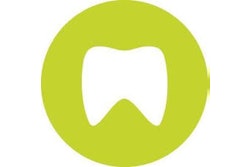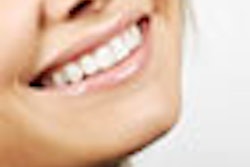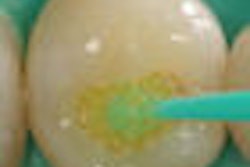
New cosmetic materials have completely changed the face of dentistry, Ronald Jackson, D.D.S., said last week at the California Dental Association (CDA) fall meeting in San Francisco.
“We've raised the standards. Good enough isn't good enough anymore.”
— Ronald Jackson, D.D.S.
"You don't have to be Michelangelo," said Dr. Jackson, who directs the advanced adhesive aesthetic dentistry and anterior direct resin programs at the Las Vegas Institute for Advanced Dental Studies. "I have no artistic ability whatsoever. I can't even draw a picture of a cat. My handwriting is so bad I can't read it." But he showed slide after slide of picture-perfect direct veneers and anterior restorations he created in his Middleburg, VA, private practice.
Rather than an art requiring talent, cosmetic dentistry is a skill that anyone can master with enough study, said Dr. Jackson, offering a series of tips for fulfilling patient's dental dreams. "The effect is dramatic," he said. "It's rewarding for the dentist and the patient."
And not just rewarding. "The stuff we do is important," he said. "The people who put down or minimize cosmetic dentistry don't have a clue what a smile means to a 14-year-old girl today. Times have changed. Looks and image and beauty are in, and that's great for dentistry."
Begin by looking
Start by studying how teeth look, Dr. Jackson suggested. "Every incisor is as different as every face," he said. "That's the first step. Next you'll begin to see what makes it different. When you begin to see those characteristics, you'll begin to put them into teeth."
Dr. Jackson listed the visual attributes of teeth in six categories, in order of importance:
Value: The human eye can much better perceive shades of gray than colors, he said. So you should rearrange your shade guide from lightest to darkest. If you are using the Vita Guide by Vident (Lumin Vacuum), Dr. Jackson recommends arranging them in the following order: B1, A1, C1, D2, B2, A2, A3, C2, D3, B3, D4, C3, A3.5, B4, A4, and C4, which he said is different from the manufacturer's guidelines.
Dr. Jackson also recommends taking off the incisal edges and necks, which are slightly different colors from the rest of the tooth.
Opacity/translucency: Dr. Jackson noted that the enamel closest to the dentin is only semitranslucent, while the outer layer is truly translucent. The new materials allow you to mimic the way light passes through or is reflected from different parts of the anatomy.
Form
Color: "I’m not even sure it's important enough to be No. 4," Dr. Jackson said. "But I'd lose all credibility if I put it any lower."
Characterizations: "This is what's going to make your restoration look like a tooth," he said.
Texture and surface contour
In the year 2000, a revolution in dental materials started because dentists started to recognize the different properties of tooth anatomy, Dr. Jackson said. The manufacturers recognized that dentin is opaque and provides the tooth's color, while enamel is translucent. The effect is like looking at a face through a window (though the glass may be tinted). New materials allow you to mimic these characteristics with composite resins.
Some companies have already produced a second generation of products since this revolution, he said. He recommended Esthet-X HD (Dentsply), Premise (Kerr Dental), Vit-l-escence (Ultradent Products), Venus Diamond (Heraeus Kulzer), Filtec Supreme (3M ESPE), and IPS Empress Direct (the successor to 4 Seasons by Ivoclar). (Of these, Dr. Jackson most often uses Empress Direct, having helped develop 4 Seasons as a consultant. He said he has been a paid consultant but doesn't benefit from sales of the products, with the exception of Tapetrix by Cognident-Novadent.)
Among Dr. Jackson's other tips:
When choosing shades, make your selection quickly. Your eyes will fatigue in a matter of seconds if you stare too long. Also get a second opinion, preferably from a woman because females have a better ability to perceive color, he said.
It's OK if a veneer makes the tooth a bit thicker. "When I do veneers, whether ceramic or composite, they are always 0.2 mm over contour," he said. "Patients can't feel that." And this allows you to spare a little more tooth structure in your preparation.
Tinting is easier than it looks. Remember that the color doesn't have to be uniform. "We're not painting the Sistine Chapel," he said. "Random is good. It looks natural." But apply it sparingly. "Put down what you think is just right, and then take a little away in finishing," he said.
He recommends Tetric Color by Ivoclar (white, light yellow, bluish-gray, and ochre), Creative Color by Cosmedent (gray, violet, and honey yellow), and Kolor Plus by Kerr (blue).
Don't forget the facial embrasures. "A tooth wouldn't look right without facial embrasures," he noted.
What the patient likes is more important than what you like. "They say beauty is in the eye of the beholder. It's not. It's in the eye of the patient. In cosmetic dentistry, the treatment is determined by the patient," he said.
Finally, strive for excellence. "We have raised the standard," Dr. Jackson said. "Good enough is no longer good enough. People who are dissatisfied tell everybody. People who are satisfied tell nobody. People who are blown away by your dentistry will shout it from the highest mountain."
Copyright © 2009 DrBicuspid.com



















